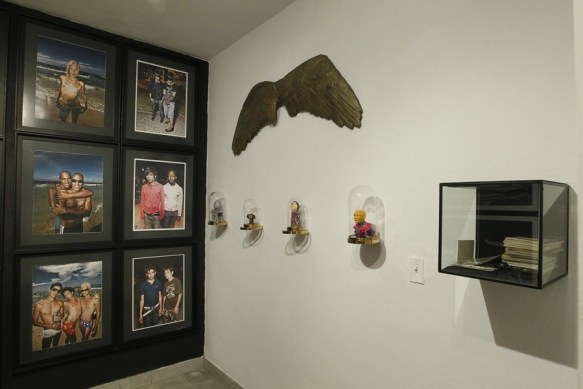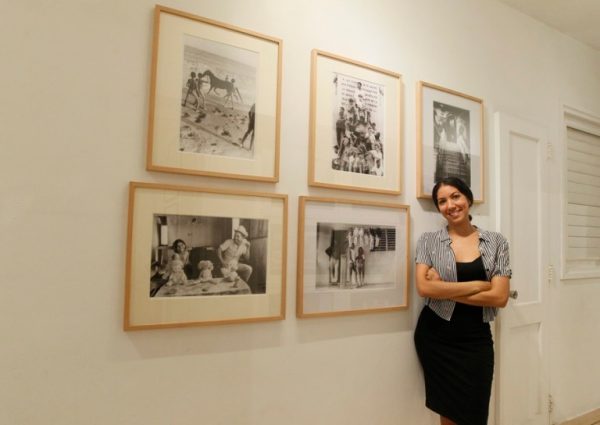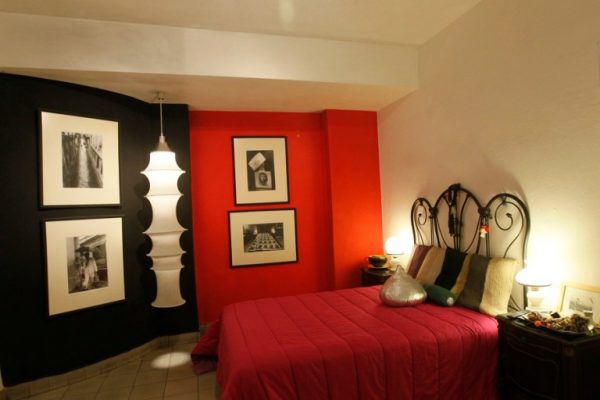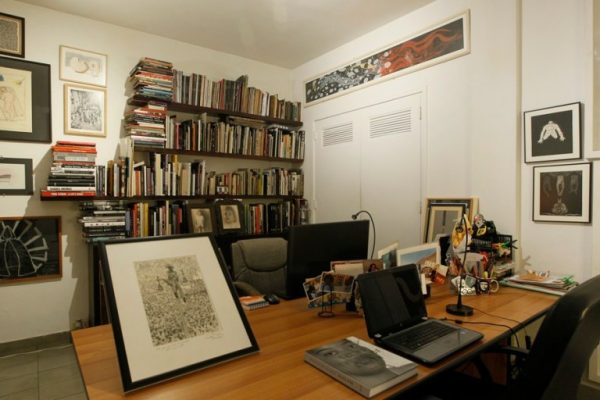An Independent Cuban Art Gallery Reaches 25 Years
As a cultural project, it has organized dozens of exhibitions that deal with social issues, and how art can mirror these.

HAVANA TIMES – The private Estudio Figueroa-Vives is renowned as a fundamental space for the promotion of contemporary Cuban art. Continual work and research, a team spirit and the ability to unite talent, are key to understanding why.
Located in Havana’s Vedado neighborhood, Estudio was founded in October 1995, by photographer Jose Antonio Figueroa and his wife, art curator Cristina Vives.
The gallery is a pioneer within Cuba’s cultural scene as an independently-run space and representation for artists. It is also managed by curator Cristina Figueroa Vives, the daughter of this marriage.
Over twenty-five years, the gallery has organized dozens of exhibitions that deal with social issues, and how art can reflect them.
Cultural promoters or managers of social organizations work together on those projects. Likewise, young and revered artists, alongside schools, academies and art lovers.
Estudio also stands out for its ongoing research for exhibitions, both in and outside its center. It’s also known for its well-aimed curatorial work, which make books or catalogs about Cuban art and artists, possible.
“A year after having completed my studies at the University of Arts of Cuba, I was taking part in a joint exhibition at the National Museum of Fine Arts when Cristina Vives invited me to join Estudio. Seven years have passed since then, and we have collaborated together on many projects and exhibitions,” said artist Lorena Gutierrez.

She also said that another of the project’s foundations “is the relationship between the artists that form a part of this space, and guest collaborators.”
It’s “a lab of ideas where synergy, a transdisciplinary approach, contributions, complementation and critique have marked all of our work. It’s no coincidence that the best artists on the scene right now have been linked to Estudio,” she continued.
Gutierrez explained that the exhibition, discussion and debate about her work with Estudio, came when she was just 30 years old. She was invited to take part in the 10th Berlin Biennial (2018), alongside the works of “two heavyweights in Cuban and global art: Belkis Ayon (1967-1999) and Ana Mendieta (1948-1985)”.
Meanwhile, graphic designer and illustrator Nelson Ponce said that at the Figueroa-Vives Studio “there are no barriers between artistic disciplines. It challenged me to expand my vision, through dialogue and being in contact with other creators.”
He believes that this multiple view of different issues has allowed him to contribute his perspective with drawings at different exhibitions.
“Figueroa-Vives Studio has become a reference for the rigor with which it deals with every issue. By showing respect for the artists and audience, they are eagerly awaiting every new exhibition,” said Ponce.

IPS Cuba spoke to the Figueroa-Vives family, due to the 25th anniversary of the project that has come to life in their own home.
Why was it necessary to create a cultural space like Figueroa-Vives Studio in Havana, in 1995?
Figueroa-Vives Studio (EFV): There are some contexts where independence is the only option. For our family, the Figueroa-Vives family, this option came along in the years of crisis immediately after the Soviet Bloc collapsed in 1989. The system of the Art Institution, which we had worked in during the ‘80s, was dismantled by the State. This took place in late 1989 and the beginning of 1990.
Between 1991 and 1994, most of the artists that still grace the national and international arts scene, had graduated from the University of Arts of Cuba. Ever since 1993, this generation of artists, and every Cuban, has had to face a situation that was unthinkable before. Circulation of the US dollar began, on Fidel’s order, which greatly impacted our economy, marking our lives ever since.
The pyramid of international art, and especially in the US with its museums, galleries, curators, specialized prints and collections, lied in wait for innovative Cuban art after the Berlin wall came down, when Cuba still wasn’t ready to face this reality. The 1994 Havana Biennial put forth the work many of these artists and launched them into the international arts circuit. However, the country’s Art Institution didn’t sustain itself and artists stopped accepting the State’s paternalistic handouts.

This was how many of us had to quickly learn the value of walking on our own two feet. Moreover, in a world that is extremely competitive and where there were three key tools for survival, even today. The amount of effort you put into something, the talent that aids you and the reputation you earn.
The appearance of Figueroa-Vives Studio in the early ‘90s, in complicity artists who are now icons, is the inevitable result of a need for independence.
IPS Cuba: What have been the main challenges for the Estudio to overcome?
EFV: Over the years, we have run into many challenges, both internal and external. On the path to navigating these successfully, they both are really rewarding. The internal challenges (there is a long list of examples that aren’t worth listing here) have to do with the vulnerability of our condition as a private organization, without any legal support, much less the good will of those who define and implement the law, cultural policy and power.
External challenges with the opportunities you have or don’t have to deal with international experience. Then there is your ability to take independent action. Albeit in a country where you don’t have all of the material or technological resources at your disposal. You also face hostility that can wear you down spiritually and they make you very fragile in your everyday life. Having to keep coming up with survival strategies for 25 years, can drain you as a project. It can mean that, despite your efforts, you perish on the way.
Up until now, our Studio has proved that it can reinvent itself and resist. We have always said that our best mission statement is our own existence. Over these past 25 years, this arts scene hasn’t suffered any significant change in Cuba. And that’s unfortunate and dangerous for the future of art in our country.
IPS Cuba: What value does the support provided by different bodies, such as the Norwegian Embassy and other institutions, public ones too, have for you? Also, the work of artists and other cultural players?
EFV: Our dialogue with national institutions has been on and off, and almost always one-way. It’s never been “support” as we understand it in cultural terms. However, it’s fair to say that state institutions aren’t generic bodies. They take on the personality of the people leading or forming part of them. This is why we have coincided with like-minded people on more than one occasion, over so many years. These are people who are thinkers and decision-makers, who agreed with our proposals. They are open to collaborating from within the institution. We are all part of the same process, even if we are working in different areas.
On the other hand, the relationship with international public or private institutions is defined by other factors. They only flow if you are capable professionally speaking. This is why we shouldn’t be talking about support or grants, but about synergy instead. That’s been our experience to date, including the priceless collaboration with our neighbors at the Norwegian Embassy in Cuba.
IPS Cuba: What do you foresee for your cultural management in the next quarter of a century?
EFV: I won’t be here in the next quarter of a century to see it. Moreover, I don’t dare to discern what the future might be like for an art gallery in a country where we don’t even know what is going to happen tomorrow. But I would like other private projects like our Studio not to be part of the minority. For them not to be called “entrepreneurs” but instead to flourish for what they are. A part of Art’s own nature, and that those who survive become the gauge of our cultural climate.
Read more news and features from Cuba in Havana Times





